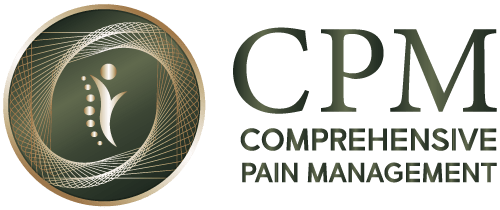8841 East Bell Road, Suite 101, Scottsdale, AZ 85260 | Rate: ★★★★★
Ankylosing Spondylitis Treatments in Scottsdale
Living with ankylosing spondylitis can be very painful. It causes your back to feel stiff and sore, making it hard to move. At Comprehensive Pain Management (CPM) in Scottsdale, we offer special treatments to help you feel better, move more easily, and enjoy life more. Our doctors can help find the cause of your pain and give you the best treatment.
What is Ankylosing Spondylitis?
Ankylosing spondylitis is a kind of arthritis. It mostly affects your spine. It causes swelling in your back joints, which makes them hurt and feel stiff. Over time, the bones in your spine can grow together, which makes it hard to bend or move. It can also affect your hips, shoulders, and ribs. If you notice any signs, it’s important to get treatment in Scottsdale right away.
Ankylosing Spondylitis Symptoms
Here are the common signs:
- Pain and stiffness in your lower back, in the morning or after sitting.
- Pain that feels better when you move but worse when you rest.
- Trouble bending or turning your back.
- Pain in the hips or shoulders.
- Feeling very tired all the time.
If you have any of these symptoms, talk to a doctor in Scottsdale for help.
Ankylosing Spondylitis Treatments in Scottsdale
At CPM in Scottsdale, we use different treatments to help with pain and movement. These include:
Regenerative Medicine
This treatment helps your body heal itself. It lowers swelling and helps fix damaged joints. It can give long-lasting pain relief.
Physical Therapy
Exercises help you stay loose, move better, and get stronger. Physical therapy makes your back more flexible and helps reduce stiffness.
Trigger Point Injections
These are shots that go into tight, sore muscles. They help reduce pain and help you move more easily.
Epidural Injections
These are shots that go into your spine. They reduce swelling and help with back pain.
Radiofrequency Ablation
This treatment uses heat to stop pain signals from reaching your brain. It gives long-term relief.
Discseel® Procedure
This helps seal broken discs in your spine. It lowers pain and helps you move better.
What Causes Ankylosing Spondylitis?
Doctors don’t know the exact cause, but some things may raise your risk:
- It can run in families (often with a gene called HLA-B27)
- It might happen when your immune system attacks your own joints
- Some infections can make it worse in some people
How Do Doctors Diagnose Ankylosing Spondylitis?
To treat it right, doctors need to know what’s going on. They will:
- Ask about your health and symptoms
- Do a physical exam
- Take X-rays or an MRI to check your spine
- Do a blood test to look for the HLA-B27 gene
- Test how well your back can move
Ankylosing Spondylitis Specialist Near Me in Scottsdale
If you feel stiff, sore, or tired all the time, don’t wait. Come see our team at CPM in Scottsdale. We’ll check your symptoms and create a treatment plan that works for you.
FAQs about Ankylosing Spondylitis Treatments in Scottsdale
What is the ICD-10 code for ankylosing spondylitis?
The ICD-10 code for ankylosing spondylitis is M45, used for medical records and insurance.
Who is the best doctor to treat it?
A rheumatologist or a pain specialist like those at CPM Scottsdale is best for treating it.
What treatment works best?
The most effective treatment is a combination of physical therapy, medication, and targeted procedures.
Are there good supplements for it?
Yes, omega-3s, vitamin D, and calcium may help reduce inflammation and support bone health.
What are the best medicines for it?
Doctors often use NSAIDs, TNF blockers, or DMARDs depending on the severity of your symptoms.
Can kids get ankylosing spondylitis too?
Yes, children can develop it, and it’s called juvenile ankylosing spondylitis, which also needs early treatment.
Dr. James KellerShabrokh
Dr. James KellerShabrokh is a board-certified specialist in Physical Medicine and Rehabilitation, focusing on spine, joint, muscle, and nerve injuries. He combines rehabilitative care, minimally invasive procedures, and preventive strategies to restore function, improve mobility, and provide long-term pain relief.
